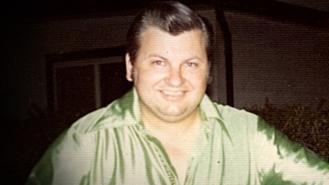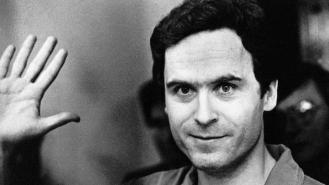
Bundy the early years
Theodore Robert Cowell was born in a Vermont home for unwed mothers on 24 November 1946, to Louise Cowell, and was raised initially by his grandparents. Teddy, as he was known, believed that his grandparents were his parents, and that his mother was his elder sister, a circumstance that was fairly common in illegitimate births at that time. When his mother married Johnnie Bundy in 1951, her son took his stepfather’s name, and was known thereafter as Ted Bundy.His stepfather’s attempts to integrate the young Bundy into the family were rebuffed, and he became increasingly more isolated as four additional children were added to the Bundy brood, preferring his own company. Despite his aloofness, he did well at school, and his natural good looks increased his popularity and improved his self-esteem.
In 1967, whilst a student at the University of Washington, he was to meet the girl who was to have the most profound effect on his life, fellow student Stephanie Brooks, who was from a wealthy family, and with whom he fell deeply in love. She didn’t reciprocate with as much passion, however, and when she graduated in 1968 she ended their relationship abruptly.His devastation was to have a major impact on his life, and it is believed that the vast majority of his future victims were selected for their physical similarities to Brooks, who became a lifelong obsession. He dropped out of college for a while, and found out about his true parentage, which must have been a significant psychological blow. However, as if to prove both Brooks and his family wrong, he threw himself into his studies with renewed vigour, becoming an honours student in his chosen field, psychology. He also nurtured a keen interest in politics, and became a charismatic Republican campaigner.Around the same time, he cultivated a new relationship that was to last five years, with Meg Anders, a divorcee with a young daughter, but his obsession with Brooks continued.
When he met up with Brooks again in 1973, she was amazed at the transformation in Bundy’s fortunes, and they rekindled their romance, with neither Brooks nor Anders knowing anything about the other. Just as Brooks began to believe that the relationship might lead to marriage, Bundy cut off all contact with her abruptly, in much the same way as she had done to him six years previously. This revenge brought Bundy little comfort, however, and his rage was sublimated into a series of brutal attacks on women, who all shared Brooks’ physical characteristics.
Ted Bundy - Timeline
Born 24 November 1946The VictimsSeattle, Washington:January 1974 - Lynda Healy,March 1974 - Donna Manson,April 1974 - Susan Rancourt,May 1974 - Roberta Parks,June 1974 - Brenda Ball,June 1974 - Georgann Hawkins,July 1974 - Janice Ott,July 1974 - Denise Naslund,Salt Lake City, Utah:October 1974 - Nancy Wilcox,October 1974 - Melissa Smith,October 1974 - Laura Aime,November 1974 - Debby Kent, 17Aspen, Colorado:12 January 1975 - Caryn Campbell,Tallahassee, Florida:January 1978 - Margaret Bowman,January 1978 - Lisa Levy, February 1978 - Kimberly Leach,First Arrest 16 August 1975First Trial 23 February 1976First Conviction 30 June 1976Escaped 30 December 1977Second Arrest 15 February 1978Second Trial 25 June 1979Second Conviction 30 July 1979Third Trial 7 January 1980Third Conviction 7 February 1980Executed 24 January 1989
Ted Bundy - The Aftermath
Justice catches up
Guilty
Bundy refused to accept his fate, and multiple appeals over the next decade resulted in stays of execution that kept him from the electric chair. In the hope that confession to other murders in the Washington State area would offer a stay in execution in Florida, he confessed to an investigator that he had committed various acts of butchery and necrophilia, and various accounts cite his victim count anywhere between 26 and 40, with others believing the total may have been much higher.It remains a matter of conjecture whether Bundy was simply exaggerating to prevent the inevitability of his execution.
Certainly, in the case of Kathy Devine (a young woman originally attributed as a Bundy victim), later DNA evidence found another man, William Cosgrove, guilty of her murder, who had no connection to Bundy. Bundy’s delaying tactics finally came to an end on 24 January 1989, and he was executed at 7 am, taking the secret of his actual victim count with him. His body was cremated and his ashes were spread over the same Washington State mountain area that had served as his favourite dumping ground for the bodies of his victims.
Ted Bundy - The Trial
Life in Prison
The First TrialBundy went on trial in Utah, on 23 February 1976, for the aggravated kidnapping of DaRonch and, despite a relaxed and confident manner, he was found guilty and sentenced to a one to fifteen jail sentence in Utah State Prison, on 30 June 1976.Determined Colorado investigators, dissatisfied with this outcome, decided that they had enough evidence to have him tried for the murder of Caryn Campbell, and they filed charges against him on 22 October 1976, which led to his extradition to Colorado in April 1977.
Clearly not relishing yet another trial, Bundy began to make plans to escape. He decided that he would represent himself at trial, and was granted library access to research his case.
He managed to jump out of a window, whilst on a library visit, on 7 June. Police cordoned off the entire surrounding area, and Bundy was captured eight days later when he broke cover to leave town.Despite additional security he managed to escape again, on 30 December 1977, by climbing through a suspended ceiling panel in the Garfield County Jail, where he was being held pending trial.
His escape was not noticed until the next day, by which time he had taken a flight to Chicago, and then travelled on to Tallahassee, in Florida.Now using the alias Chris Hagen, Bundy supported himself almost entirely by petty theft and, apparently unable to quell his murderous impulses, he struck again at a Florida State University sorority house on 14 January 1978. Four students suffered severe sexual abuse, and two died as a result of the assaults, which had escalated even by Bundy’s standards: one of the women had been violated with a metal hairspray canister, another had her nipple almost severed.
The two survivors were extremely fortunate, but so was Bundy: local investigators were unaware of him, and evidence collected from the crime scene proved inconclusive.Bundy struck again on 9 February 1978, taking 12-year-old Kimberly Leach from her school, before sexually assaulting and strangling her. She was to prove his last victim; on 15 February, in a manner very similar to his 1975 arrest, Bundy was apprehended after a scuffle with a policeman, when the VW Beetle he was driving was stopped for having stolen licence plates.The Second TrialBundy’s second trial took place on 25 June 1979 in Miami, Florida; and the charges related to the attacks and murders of the Florida University Sorority students.
The testimony of one of the survivors proved damning for Bundy, who mounted his own defence, as did the dental evidence that linked him conclusively to the attacks.The jury returned a verdict of guilty and, on 30 July 1979, the judge sentenced Bundy to death twice for the murders, by means of the electric chair.
Bundy continued to maintain his innocence.The Third TrialHis third trial related to the murder of Kimberly Leach, and commenced on 7 January 1980. Bundy decided against self-representation, and his defence counsel pleaded not guilty by reason of insanity. Bundy had lost all traces of his confident demeanour by this stage, and the volume of forensic evidence and eyewitness testimony linking him to the crime convinced the jury to again return a guilty verdict. Another sentence of death by electrocution was handed down on 7 February 1980.
Ted Bundy - The Arrest
Killer Caught
On 16 August 1975, Bundy was picked up, after a short chase, in Salt Lake County, after a local policeman recognised his VW Beetle. A vehicle search revealed handcuffs, a ski mask and a crowbar, and Bundy was arrested. Police were convinced that they had their serial killer, and Carol DaRonch picked him out of an identity parade, strengthening the case against him considerably.A full-scale investigation of Bundy’s past was launched, and Meg Anders provided assistance to the police. Bundy continued to plead his innocence however and, despite credit card evidence linking him to the Taylor Mountains area, police were not able to conclusively tie him to the multiple murders there.
Ted Bundy - The Crimes
First murder
On 4 January 1974, Joni Lenz became one of the few women to survive Bundy’s brutal attacks, but her vicious rape, with a bedpost, caused her massive permanent damage, that was both physically and psychologically traumatic.21-year-old Lynda Ann Healy, a slender, pretty, long-haired law student, was not as fortunate; her disappearance on 31 January 1974 did not initially alarm the police, despite the concern of her parents, but they were forced to review their stance when seven other young female students, all bearing a striking resemblance to one another, disappeared inexplicably over the following few months. The bodies of two of these girls were later identified as Janice Ott and Denise Naslund, who both disappeared on 14 July. Eyewitnesses on the day remembered a strange man named Ted, with an arm in a plaster cast, who drove a VW Beetle.Bundy moved on to Utah, taking another four victims during October and November, one of whom turned out to be the daughter of the local police chief, and no effort was spared to track down the killer.
Utah police noticed that the brutal signature of rape, sodomy and blunt force trauma was similar to the Washington State cases reported earlier in the year, and they sought assistance from their colleagues there, constructing an accurate composite of “Ted” from eyewitness accounts.During this time, Meg Anders, Bundy’s partner of five years, recognised that the description matched that of Bundy, but when she contacted police they were duped by Bundy’s handsome, affable persona, and he was not regarded as a serious potential suspect.
Bundy’s botched abduction attempt of Carol DaRonch from a Utah shopping centre on 8 November 1974 gave police their first major break, providing further corroboration of Bundy’s identity, as well as a blood sample that resulted from his struggle with DaRonch. Debby Kent was not as fortunate, however, and she was killed by Bundy later on the same day that DaRonch had made good her escape.For the following two months no further victims were identified, until Caryn Campbell was brutally murdered in Colorado on 12 January 1975, showing every sign of having suffered Bundy’s gruesome MO.
Police were coming to realise that the Taylor Mountains in Washington State were a favoured dumping ground for Bundy’s victims, and extensive searches uncovered a further three bodies, all victims having died from blunt force trauma. Despite this success, police forces in four states seemed no closer to catching Bundy.
Read more:



